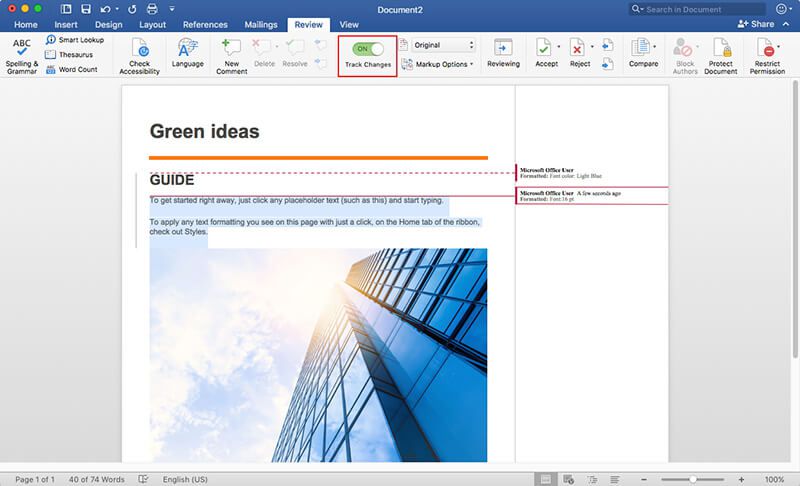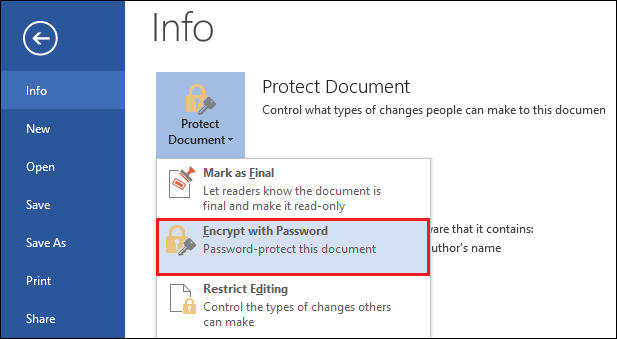

Now set your desired password for opening the document and click. In the ribbon up top, hit Review > click Protect > click Protect Document. You should now be able to edit the document. Launch Microsoft Word on your Mac and open a document. Change the file name if you want to preserve the original password-protected document an make this a new document, or use the same file name to replace the original document. As soon as you’ve opened it, go to File > Save As, then select Word Document (*.docx) from the Save as type drop-down list.Right-click on the saved XML file, then select Open with and choose Microsoft Word.Save the XML document within your text editor, then close the text editing software.Replace the “1” with a zero “0” (or replace “on” with “off”) to disable enforcement.You’ll find one instance, either w:enforcement=”1″ or w:enforcement=”on”.If you want to password-protect the file, check the Require password to open box. In the Find what field, type enforcement. If you have an Apple Pages or Microsoft Office file, youll find that.In the next dialogue box, enter a password in the top field to. Press Ctrl+F to open the Find dialog box. Click Protect document from the dropdown menu.WordPad, NotePad, or other text editing program - do NOT choose Microsoft Word). Right-click on the saved XML file (it should be in the same folder as your original document), then select Open with and choose a text editing program to open the file with (e.g.If you use Microsoft Office on Mac, you can quickly safeguard your.
 Go to File > Save As, then select Word XML Document (*.xml) from the Save as type drop-down list. Office file encryption is more important than other files encryption and in common use. If the entire document has been protected, then you may not be able to open it, and thus can’t do any of the steps below. For those documents, the password protection applies to elements of the document, not the whole document, and you can open it but not do much with it. Open the password-protected document in Word, if you can. NOTE: Many password-protected documents can be opened but you can’t do anything with them, like change any wording that isn’t inside a form field, modify styles, apply different formatting etc. Global leader in cybersecurity solutions and services, Kaspersky offers premium protection against all cyber threats for your home and business. You can follow the steps in the link above, or, in case the content at that link gets removed at any stage, follow my modified and more detailed steps below, which are based on that article: However, if the author has left the company, or if they wrote the document many years ago and have forgotten the password (it happens!), then you may need to break the password protection to access the document’s contents and functions. protected form fields, formatting tools etc.). Now, why would you want to unlock a password-protected Word document? Surely the author/company has locked it for a reason? Yes, in many cases, that’s correct and you shouldn’t try to circumvent the password protection - instead, ask the author/company for the password if you need to access elements of the document (e.g. Editor comments will need to be addressed separately.I spotted this 2009 article ( ) a few weeks ago, and have now had time to test it - it works! To accept all changes in the document, click the dropdown arrow of the Accept icon and select Accept All Changes in Document. Once you click Accept, your text will be replaced with the proposed correction and the cursor will advance to the next correction. To accept the proposed change, click the Accept button. The cursor will advance to the first proposed correction. The next step is to place your cursor at the top of the document and click Next in the Changes panel. In the following screen shot, we have disabled the Track Changes feature. If you continue with the Track Changes feature on, your changes will be recorded.
Go to File > Save As, then select Word XML Document (*.xml) from the Save as type drop-down list. Office file encryption is more important than other files encryption and in common use. If the entire document has been protected, then you may not be able to open it, and thus can’t do any of the steps below. For those documents, the password protection applies to elements of the document, not the whole document, and you can open it but not do much with it. Open the password-protected document in Word, if you can. NOTE: Many password-protected documents can be opened but you can’t do anything with them, like change any wording that isn’t inside a form field, modify styles, apply different formatting etc. Global leader in cybersecurity solutions and services, Kaspersky offers premium protection against all cyber threats for your home and business. You can follow the steps in the link above, or, in case the content at that link gets removed at any stage, follow my modified and more detailed steps below, which are based on that article: However, if the author has left the company, or if they wrote the document many years ago and have forgotten the password (it happens!), then you may need to break the password protection to access the document’s contents and functions. protected form fields, formatting tools etc.). Now, why would you want to unlock a password-protected Word document? Surely the author/company has locked it for a reason? Yes, in many cases, that’s correct and you shouldn’t try to circumvent the password protection - instead, ask the author/company for the password if you need to access elements of the document (e.g. Editor comments will need to be addressed separately.I spotted this 2009 article ( ) a few weeks ago, and have now had time to test it - it works! To accept all changes in the document, click the dropdown arrow of the Accept icon and select Accept All Changes in Document. Once you click Accept, your text will be replaced with the proposed correction and the cursor will advance to the next correction. To accept the proposed change, click the Accept button. The cursor will advance to the first proposed correction. The next step is to place your cursor at the top of the document and click Next in the Changes panel. In the following screen shot, we have disabled the Track Changes feature. If you continue with the Track Changes feature on, your changes will be recorded. 
If Track Changes is switched on, as in the screen shot below, make sure you click on the ON icon to turn this feature off. Locate the Track Changes icon in the Tracking panel be sure that the Track Changes is switched off.

Open your Microsoft Word document, and locate the Review tab.








 0 kommentar(er)
0 kommentar(er)
